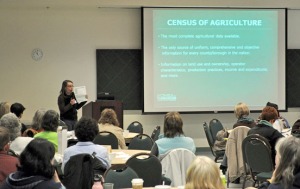
Redoubt Reporter file photos. Kenai Peninsula growers are finding high tunnels effective for Alaska-hardy produce as well as more exotic fare, such as corn and fruit trees.
By Jenny Neyman
Redoubt Reporter
When people think about the economy of the Kenai Peninsula, it’s usually oil and gas, fishing, and maybe education, health care or government. But there’s a growing trend to add another sector to that list — farming.
“These are not hobby farmers, these are hard-working folks. They are investing in infrastructure, they are buying equipment, they’re building storage, they’re building refrigeration for peonies, they’re putting up more high tunnels planting more. These folks are thinking ahead, and I think the rest of us should, as well,” said Heidi Chay, manager of the Kenai Soil and Water Conservation District, speaking at a Kenai Chamber of Commerce meeting Dec. 16.
Commercial agriculture is typically thought of on a big scale, but the Kenai Peninsula is growing its own agricultural revolution, one small operation at a time.
“Today the farms that are making headlines are the small farms under 10 acres, very likely under 5 acres,” Chay said.
From 2007 to 2012, there was an 11 percent increase in the number of farms statewide, and a 62 percent increase in the number of farms selling direct to consumers. On the Kenai Peninsula, farm numbers increased 30 percent in that time frame, and direct-selling operations have increased 111 percent.
A lot of that increase is due to high tunnels. The Kenai Peninsula has the highest number of high tunnels per capita in the country.
“If you don’t know already, this technology has transformed farming and food production in this state,” Chay said. “We can grow crops that we couldn’t grow easily here before. And these high tunnels lengthen the season significantly enough that farmers can harvest earlier than ever before, allowing them to put in a second crop, or even a third.”















